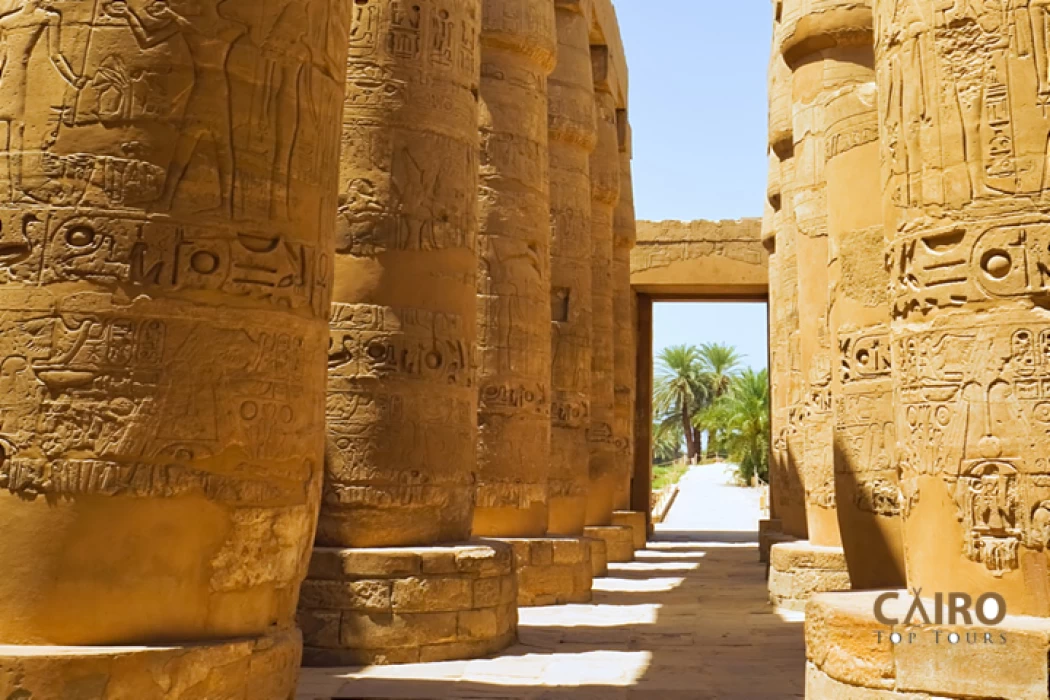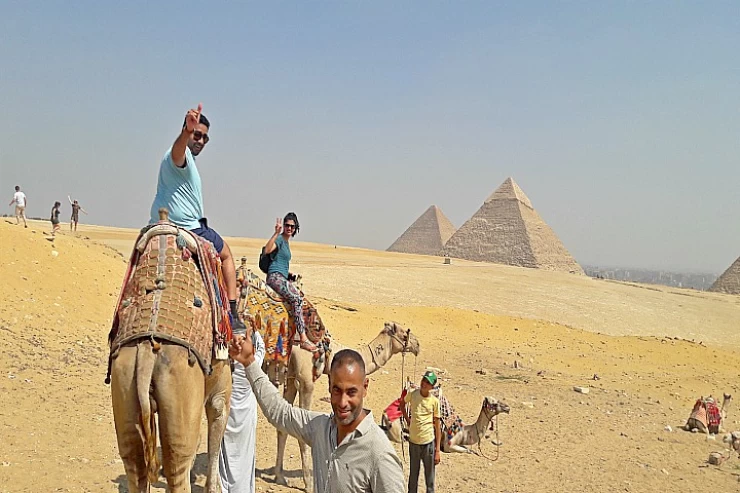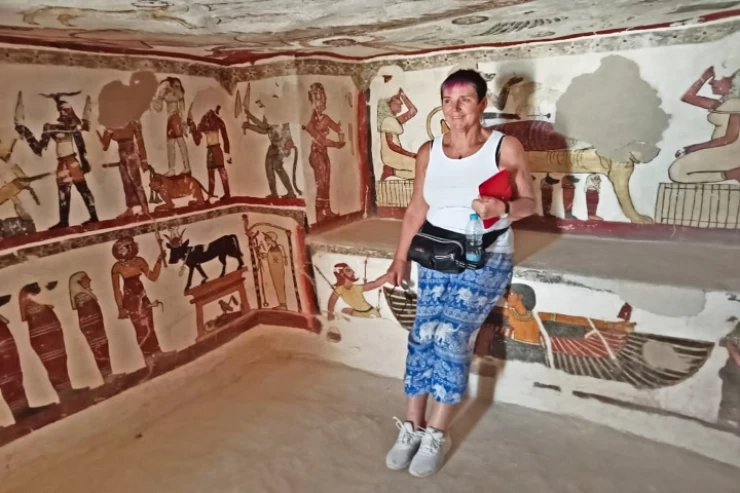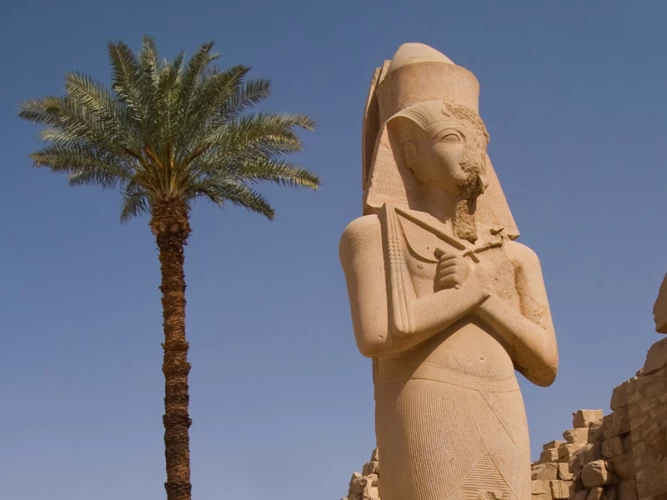
Karnak Temple in Upper Egypt | The Largest Egyptian Temple
Karnak Temple
The temples of Karnak are mistakenly called Karnak Temple because it is a group of Karnak temples, not just one temple. If we enter inside the wall, we find the Temple of Khonsu, Mentu, two temples of Aten, the Temple of Mut, and many tombs. This means that we should not call the Karnak temple the wrong temple, but a group of Karnak temples...
Karnak temples are considered the largest and most luxurious temples in ancient Egypt and perhaps larger than any contemporary temples in the world. These temples are considered a faithful record of the history of ancient Egypt for civilization in particular and the ancient Arabian Levant region and its surroundings in general, from the era of the Middle Egyptian state (2050 BC) to the Ptolemaic era (2050 BC). From the era of the Middle Egyptian state (2050 BC) to the Baltimi era, that is, for nearly two thousand years, the rulers of Egypt, from the pharaohs and others, added sacred architectural facilities to this temple, which made it a great historical document where the researcher can see through the ancient Egyptian inscriptions and texts that the pharaohs decorated its walls, as it constitutes the stages of ancient Egypt and its relationship with the ancient Arabian Levant.
History of the Karnak Temple
Karnak was not built during the reign of one king, but most of the kings of the New Kingdom and those who came after them also participated in its construction, and the term Karnak Temple has been called since the Middle Ages, as the ancient Egyptians believed in its history with a religious belief, namely that the gods are the source of everything in human life and all existence.
The victory in battles is granted by the god to the king, where he gives him his sword and his divine knowledge, so he sets the plan that the god inspired him to implement, and then the victory is achieved as he creates good conditions and appropriate winds to win the king's commercial projects and mining campaigns, so the king must then thank the god who defeated him in the war, and this is done by allocating part of the spoils, tribute, and commercial profits to the temple of the gods since the beginning of the New Kingdom (1580 BC). Egypt fought many wars in the region of the Levant and Nubia, and victory was always its ally, and thus the temple of Amun received its share of the spoils, tributes, and commercial profits, and therefore the wealth of the temple of Amun grew with the passage of days greatly, and in order for the king to express his thanks to Amun, the god of the capital (Thebes), who was victorious and successful, he built him a very grandiose column base worthy of his prophecy, or a monument or obelisk as an expression of the king's piety and faith, and that is how the Karnak temples arose.
Karnak Temple Location
Karnak Temple is located west of Thebes, about three kilometers north of Luxor Temple, and is considered the main temple of the god Amun, as it was surrounded by an adobe wall in the form of a rectangle 550 m long, 480 m wide, and 12 m thick, and it was surrounded by eight gates. The mud-brick wall surrounded the entire complex.
Sections of temples
King Amenhotep I (1550 BC) was the first to seek to build a temple for the god Amun in Karnak. He chose a sacred land that was occupied by a temple dating back to the Middle Kingdom of Egypt, but he died without realizing his dream, but his successor Thutmose I realized his predecessor's dream on the same sacred land, and this work was the first nucleus of the Temple of Amun-Ra in Karnak, and his work was the first nucleus of the Temple of Amun-Ra in Karnak.
God's path
This road precedes the front of the temple and is lined with two rows of statues in the shape of the Sphinx with the head of a ram symbolizing the god Amun, who protects the king whose image is engraved on the statue's chest.
The pylon (Pylon), according to the Greek nomenclature, is the ancient Egyptians built the pylon at the front of the temple on the west side, 113 m long, 40 m high, and 15 m thick, and its construction dates back to the Thirtieth Dynasty, and it is a huge building with two towers with a rectangular base between them and a granite entrance, but it is less high than them and has a wooden door covered with precious metal, and the pylon symbolizes the horizon; that is, the Egyptians imagined the two towers as two mountains through which the sun rises, and thus the temple became the beginning of the universe.
This pylon is followed by an open courtyard dating back to the Twenty-second Dynasty (Libyan), and Ramses III built a temple at the southeast end of this courtyard dedicated to the trio of Thebes: - Amun - Mut - Khonsu After this courtyard comes the second pylon, which is demolished; its construction was started by King Hor Mahab of the Eighteenth Dynasty and completed by Ramses I of the Nineteenth Dynasty, which leads to the hall of columns...
The temples of the gods in the era of the Egyptian New Kingdom were divided into three sections: Per style, which is an open courtyard for the common people, followed by the Hypo style, which is dedicated to the coronation of the king and the private people, and finally the Holy of Holies, where the statue of the god rests, and only the king and the high priest have access to it; the most important sections of the Temple of Amun-Ra in Karnak from west to east.
Rams Road
It is the road that used to connect the temples of Karnak and Luxor over a distance of up to three kilometers known as (Ta-Met-Rahant), which is translated as the Road of the Rams, and there are 1,200 statues along the road of 2,700 km, 76 meters wide, 1,200 statues, and these statues were made of a single block of sandstone with a cornice on which the name of the king and his titles and praise were engraved on the stone base consisting of four pillars of the stone used because there were some inscriptions.
Columns Hall
Built by King Seti I of the Nineteenth Dynasty, it is the great ceremonial hall of Karnak Temple. It is located in the center of the temple, occupying its entire width with a length of 103 m and a width of 52 m. Thus, its area is 5400 m², and its roof carries 134 cylinders.
(the column whose hull is shaped like a cylinder)
It is divided into sixteen rows. The center of the hall is occupied by twelve cylinders in two rows, each with a crown in the shape of a fresh papyrus flower. One hundred people can stand on it, with a diameter of 5.5 m and a height of 19.25 m. These cylinders are higher than the side cylinders for lighting, while the side cylinders are 122 cylinders with a height of 14.75 m. Thus, one imagines that one is in front of a dense forest of papyrus, creating a sense of admiration and awe.
The Hall of Fossils
The largest hall of its kind in history, the visitor feels that it is very small and narrow as a result of the geometric exaggeration in this hall due to the large number of columns, and this was intentional as the ancient Egyptians wanted to represent a swamp with jungles where he wanted to represent the delta jungles, and the ancient Hall of Rocks was marred by darkness, and light only entered through the windows.
Obelisks
It is a single block of red granite stone, with a quadrilateral whose sides slope inward from its square base until its peak ends with a pointed pyramid, which was covered with metal plates, and its sides were decorated with hieroglyphic writing that includes the titles and names of those who erected it, a symbol of the sun god Ra.
Obelisks are an important part of the urban fabric of Karnak, and the kings of the modern Egyptian state erected obelisks in many places in Karnak Temple in particular and Egypt in general, but only a few of them have survived, as most of them were moved to Italy, France, the United States, Constantinople, and England, and only two obelisks remained in place in Karnak, one for Thutmose I and the other for Hatshepsut.


















